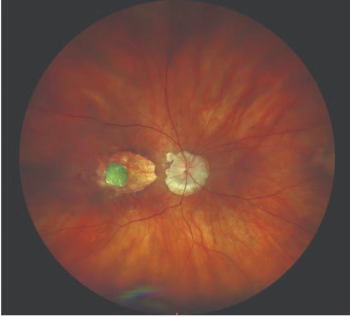
Handheld device offers early screening of amblyopia
A new handheld pediatric vision scanner can detect amblyopia and strabismus with over 90% accuracy. The device can be used to screen children too young to read or recognize letters as well as those of school age since the only requirements are to sit still for a few seconds and look at a smiley-face target in the machine.
Reviewed by David G. Hunter, MD, PhD
Boston- There’s a new tool on the market for amblyopia and strabismus screening of even very young children: The Pediatric Vision Scanner (PVS), which received FDA approval this year. The PVS offers pediatricians, school nurses, and other healthcare providers a screening method that is not only easy to use, but more reliable than manual examination or photoscreening.
Recent:
Scanning with the handheld PVS is completed in 2½ seconds and independent clinical trials show that the accuracy is about
Related:
Developing the scanner and getting it into the hands of users has taken more than 20 years. The effort to secure investor funding and mass produce the device is an ongoing challenge, Dr. Hunter said, but attaining FDA marketing clearance was a crucial step.
Related:
The FDA approved the PVS via the de novo pathway, meaning that there is no other device with the same indication.
“Even today, most pediatric practices use manual methods of screening kids for vision problems. That is, they have them hold a cover over one eye and try to read an eye chart across the room. While that works okay for kids who are already in school, it doesn’t work so well for preschoolers, and it doesn’t work at all for kids who can’t yet read or talk,” Dr. Hunter said. “As a result, there are lots of kids who don’t get any kind of efficient eye screening until school age. The problem is, we want to get these kids when they’re preschoolers because that’s when it’s easier to treat the amblyopia.”
Referring children who don't require treatment
Over the years, a number of photo screeners or refractors have been developed to look for amblyopia by checking for refractive error. “The problem with those is that risk factors aren’t the same as disease,” Dr. Hunter said. “Only a small fraction of kids who have risk factors for amblyopia actually need to have any kind of treatment. You end up referring a lot of kids who will never need treatment, and that’s not going to be an effective screening program.”
More:
Instead, Dr. Hunter and colleagues, including his mentor, David L. Guyton, MD, currently Zanvyl Krieger professor of pediatric ophthalmology at Johns Hopkins Wilmer Eye Institute, Baltimore, wanted to screen for strabismus since most patients who have amblyopia also have this companion condition.
Recent:
Their idea was to scan the retina with polarized light, examine the pattern of nerve fibers emanating from the fovea, and use this as a means of detecting fixation. In the early 1990s, they built a scanner that could reliably identify fixation of the eye, although the first model could only scan one eye at a time.
The next steps were to condense the device to handheld dimensions, and then to combine two scanners so both eyes could be analyzed simultaneously. After many years of refinement, the result was the recently approved PVS.
Related:
The current device works even better than the developers hoped, Dr. Hunter said. “We thought we were going to have to have two steps: One, look for strabismus; and two, look for risk factors. But it turns out that we were able to completely dispense with the whole risk factor piece because the PVS not only detects strabismus but it detects amblyopia as well.”
This feature will allow the device to be used by eye care specialists for early diagnosis of amblyopia in preverbal children.
Clinical trials
Clinical trials have tested the device on children as young as 2 years old, though outside of that formal setting it has been used to screen infants. As long as a child can sit still and look at the smiley-face target inside the machine for a few seconds, he or she can be tested, Dr. Hunter explained.
Interpreting results is simple: if two lights on top of the scanner both turn green, the child’s eyes are normal. However, a child’s eyes will change during development, so annual screenings are recommended.
More:
“I think that if the day could ever come where every pediatrician is scanning every child at the well child visit starting at age 2 with this device, considering its accuracy, then we could eliminate severe vision loss from amblyopia,” Dr. Hunter said.
Potential implications
This is a problem worldwide in both developed and developing countries. Using the PVS would be more cost effective in public health campaigns than sending squads of nurses to schools, clinics, or other sites to conduct vision screenings by more conventional methods.
Related:
And because it’s small, easy to use, and accurate, it would be well suited to screenings in remote areas once a durable, battery-powered version is available. Potentially, thousands of children could be scanned in a day by a team using several scanners, and the small percentage with apparent problems-not just strabismus and amblyopia but cataracts, tumors, and retinal abnormalities-could then be referred for further evaluation.
David G. Hunter, MD, PhD
E:
Newsletter
Keep your retina practice on the forefront—subscribe for expert analysis and emerging trends in retinal disease management.












































